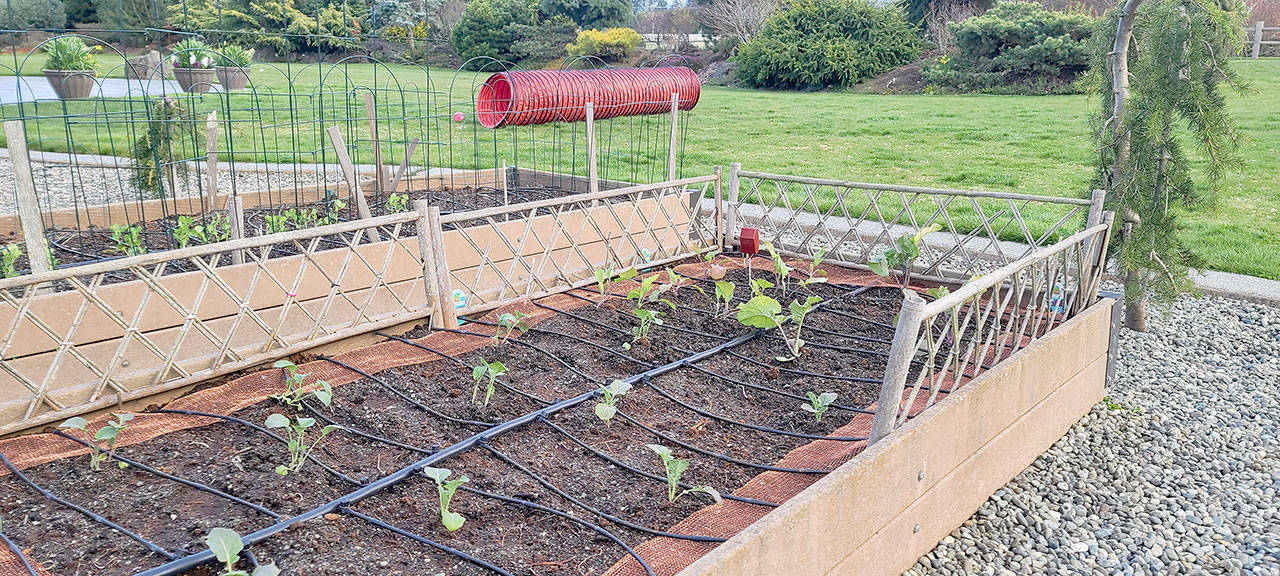THE NATIONAL COLLEGE basketball championship game went down to the final shot, and Baylor defeated the previously undefeated Gonzaga team handily!
In your vegetable garden, any of the brassica species you decide to play (plant) can be real kitchen winners, provided you know how to use their advantages.
Let us finish with the analysis of the last of the brassica team lineup.
Broccoli
Classified in the Italica group Brassica Oleracea, also derived from wild cabbages.
The Romans cherished this plant some 2,000 years ago for its high nutritional value.
The word “broccoli” is actually Italian, and derives from the plural form “broccolo” which means “the flowering top of a cabbage.”
Like all brassica, broccoli thrives in cool climates, with mild evenings and soil temperatures of less than 80 degrees, making your vegetable garden the ideal place to grow this amazing plant.
Broccoli grows biannually, but is harvested the first of the year as the heads develop.
Many varieties of broccoli, especially when the head is cut off short, produce many small florets (mini-mini-head) around the main stock for weeks.
Broccoli should be sown or planted in 10- to 14-day successions, in soil not too rich in manures or nitrogen, wherein rampant vegetative growth will occur in lieu of the edible head.
Weed and cultivate the soil regularly. Broccoli should be kept moist and dry spells for crisp, flavorful produce.
Incredibly high in vitamin C, dietary fiber and micronutrients, boiling it for more than a few minutes (4-5) reduces the nutrient value 30 to 50 percent, but other cooking methods offer smaller nutrient losses.
Cauliflower
Brassica Oleracea are the same species and share many structural features, but cauliflower produces an inflorescent meristem called a “curd.”
Some varieties have leaves that curl inward, shading and covering the curd. Ones that do not should have their inner leaves tied together for sun protection, otherwise the curd will turn an unattractive molted brown or greenish color.
There are four just types of cauliflower:
1. Italian — including the green, purple, yellow and orange cultivars and the ancestral forms.
2. Northwest European— developed in France during the 19th century, these are great for winter, early spring and late fall production.
3. Northern European— these varieties are used widely in Europe and America for summer and early fall production. They were developed in 19th century Germany, and include the ever-popular “snowball.”
4. Asian— tropical-color flowers used in China and India and bred in the 19th century, the orange cauliflower “cheddar” and “orange bouquet” have 25 times the vitamin C of other white types, and curds eaten raw contain 13 different vitamins and minerals.
Plant a few every 10 days in a hummus, rich, well-drained soil and keep uniformly moist during their entire growing period. They freeze very well.
Brussels sprouts
Believe it or not, this plant was probably first grown in Belgium (Brussels) in the 13th century and moved quickly throughout northern Europe because of its requirement of mild temperatures (45 to 75 degrees, with best yields at 59 to 64 degrees) for good production.
They take 90 to 180 days, and are most flavorful and sweet when harvested after a good frost.
Edible sprouts grow along the long stalks and ripen from the lower to the upper, so each stalk can be harvested for a few weeks.
They freeze great and store well, but most people have been turned off by a sulfurous odor and bitter taste that is caused by overcooking, which releases glucosinolate sinigrin and causes the smell.
Steam or boil for only 6 or 7 minutes.
Brussels sprouts contain 15 essential vitamins and nutrients and, like most brassica, are high in dietary fiber.
Turnips
Brassica Rapa is a temperate climate-loving root crop, originating in Asia and Europe and was known in Greek and Roman times.
It was and is produced for both human and livestock consumption, depending on the variety.
The leaves sprout directly above the in-ground root, with no visible crown.
People also eat the very young, small turnip leaves, which are a common side dish in the south. Baby turnips, which don’t have multicolored varieties and are much smaller, are eaten whole — leaf and all.
In 1881, the Household Cyclopedia said this about turnips: “The benefits derived from turnip husbandry are of great magnitude, light soils are cultivated with profit and facility, abundance of food is provided for man and beast.”
Rutabaga
Brassica Napus Napobrassica is from Sweden and was derived from cross-breeding cabbage and turnip plants.
Rutabaga means “root bag” in Swedish.
You can roast them, use them in soups or eat them raw, boiled, steamed or mashed.
They will thrive in your garden, with the root protruding halfway out of the ground.
They are a long crop of 90-plus days, so plan accordingly.
Bok choy
Brassica Rapa, or Chinese cabbage.
There are two distinct groups of bok choy, Napa cabbage (pekineses) and chinensus.
Both are used as leafy greens, and bok choy means “white vegetable.”
Bok choy is succulent in both stem and leaf, is great steamed, boiled or stir-fried and is abundant in vitamins A and C.
It is easily grown on the Peninsula and commingles very well in the garden with other vegetables. Plant or sow every two weeks.
Well, there you go, plant many a brassica, hold your own tournament to determine your kitchen table winner.
Be a real winner yourself and stay well all!
________
Andrew May is a freelance writer and ornamental horticulturist who dreams of having Clallam and Jefferson counties nationally recognized as “Flower Peninsula USA.” Send him questions c/o Peninsula Daily News, P.O. Box 1330, Port Angeles, WA 98362, or email news@peninsuladailynews.com (subject line: Andrew May).

